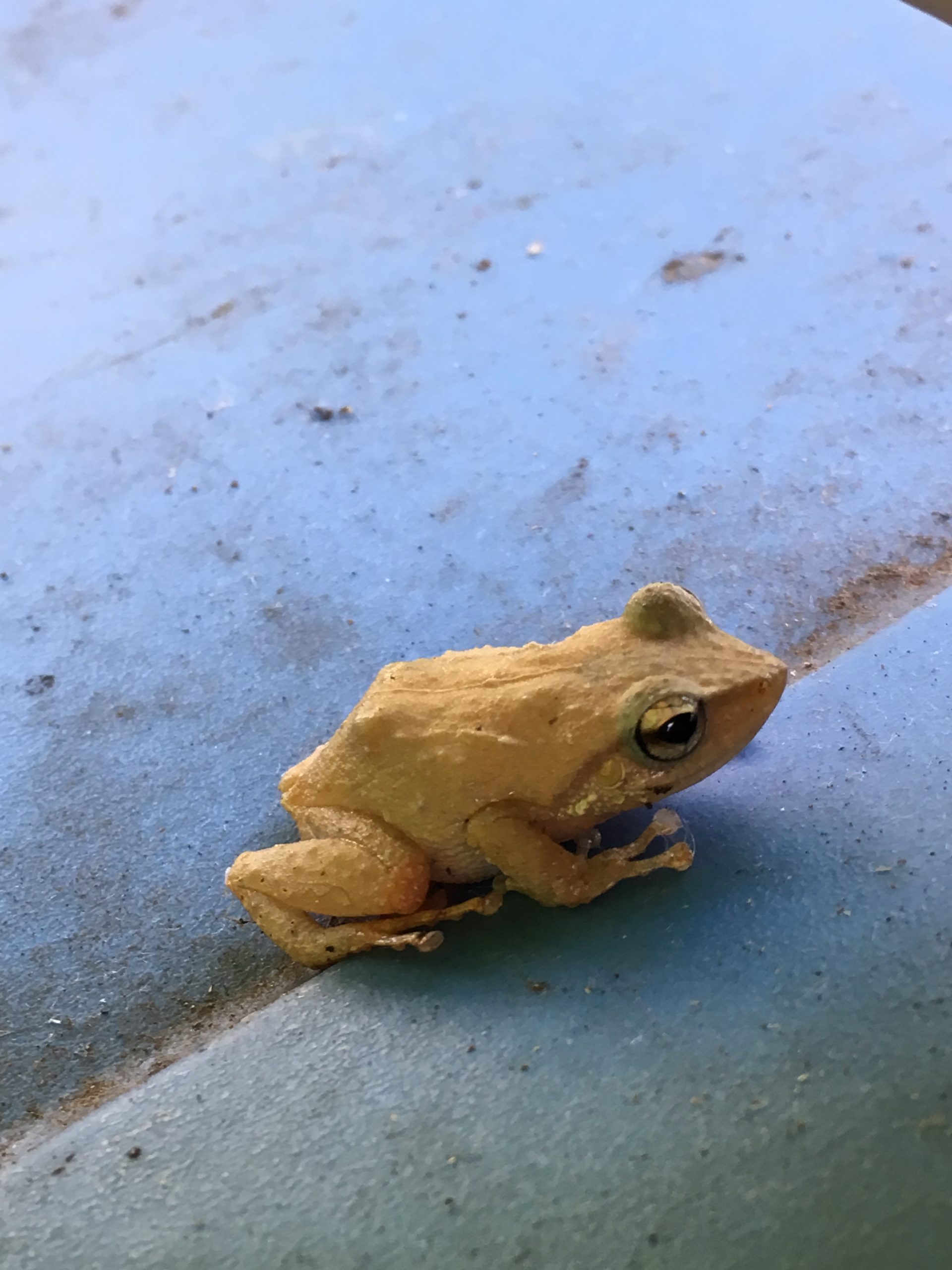
Coqui Frogs
Coqui Frogs were accidentally introduced to the Big Island in the late 1980’s on imported nursery plants. Beloved in their native Puerto Rico, coqui in Hawai‛i lack the natural predators that keep their population in balance, and their numbers quickly exceeded the population densities of their home range. On Hawai‛i Island, coquis are recorded to reach densities as high as 2000 frogs per acre, more than twice the number found in similar areas in the Caribbean.
Hawai‛i evolved with no native terrestrial amphibians, and the natural ecosystem here is not adapted for their presence. Coqui are voracious eaters and although they will consume any insect they find, most of their forage time is spent in leaf litter looking for their invertebrate prey, which may be introduced or native. As many of our native invertebrates are already threatened by reduced habitat, coqui pose a troubling threat to our native ecosystems. Studies have shown they eat most crawling insects, not mosquitoes, as once had been hopefully suggested. Many homeowners throughout Puna have reported that high-density infestations of little fire ants will reduce populations of coqui frogs, although these residents also indicated that this benefit was not enough to tolerate fire ants.
Coqui (Eleutherodactylus coqui)
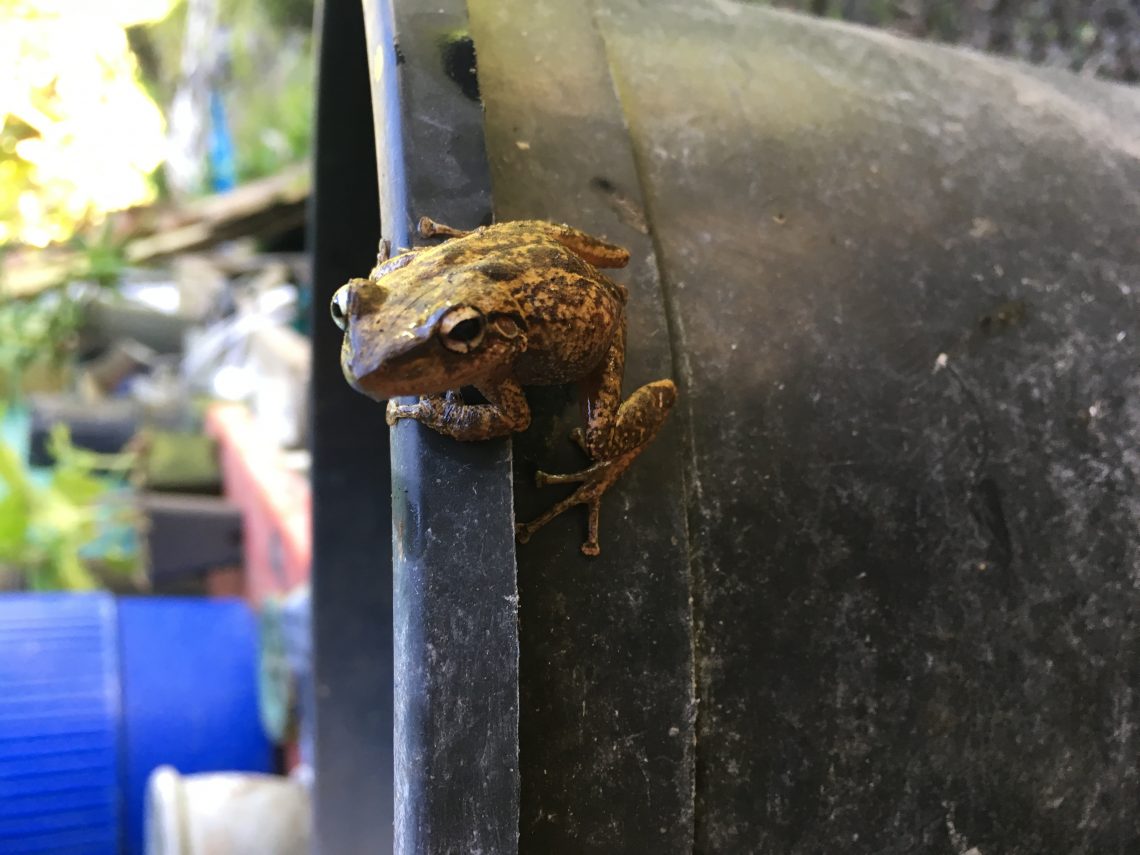
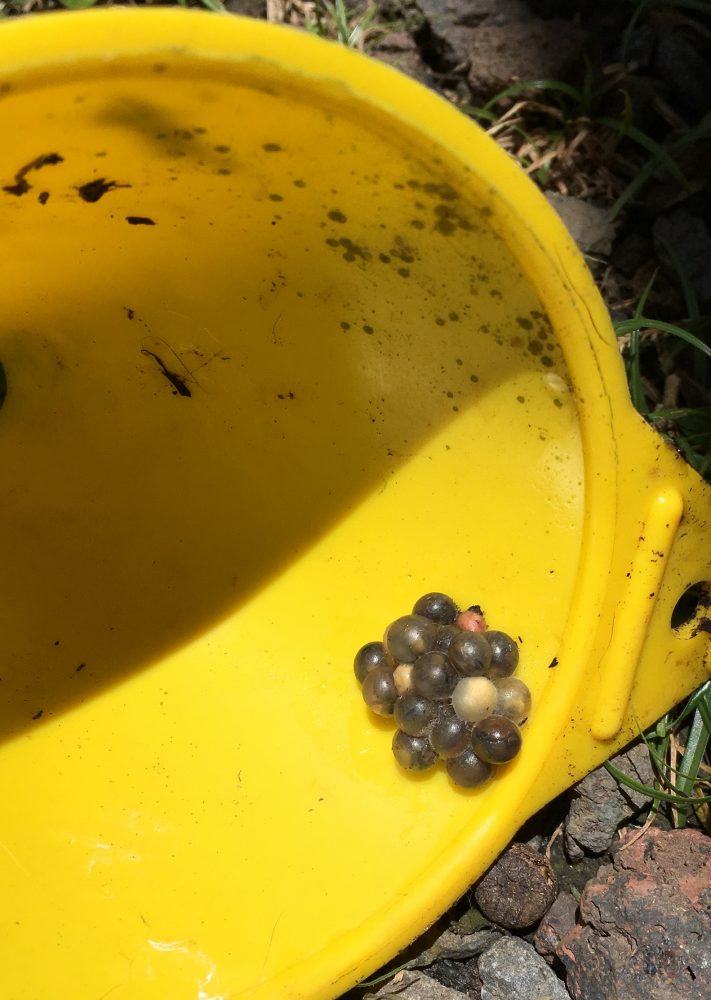
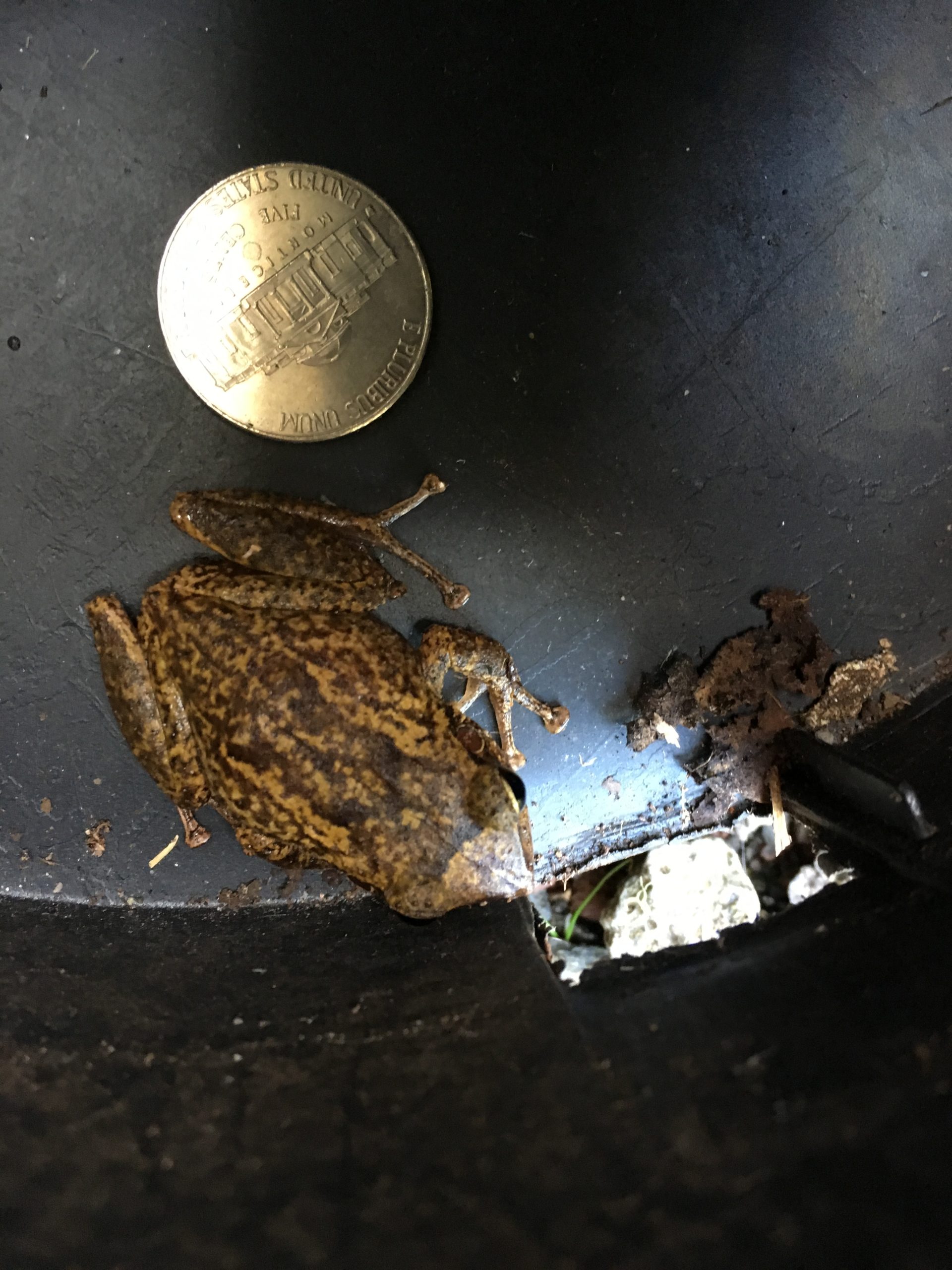
Photos: BIISC
The distinctive “KO-kee” call that gives the frog its name can reach 100 decibels, louder than many power tools and lawn equipment, and can be very disruptive for residents in infested areas. The males will call from dusk to dawn to ward off competitors and attract a mate. In the morning, the frogs retreat to the ground and look for moist, shady areas to spend the day. Homeowners in highly infested areas have reported that in recent years, coqui will even call on overcast days or from heavily shaded areas.
Coqui have completely invaded most of East Hawai‛i from Glenwood to Kalapana and throughout North Hilo, with dozens of smaller populations sprinkled throughout the rest of the island. They are tree frogs but are capable hitchhikers who have evolved to move with human belongings as we travel from place to place. Although potted plants are the most common route of spread for many invasive plants, coqui are known to travel in garbage cans, vehicles, camping equipment, and whatever they can cling to! Reducing habitat, enacting vigilant biosecurity, and working with your neighbors is the best way to prevent or control a coqui infestation in your neighborhood.
Description:
- Adults are about 1 inch long, females can be closer to 2 inches
- Varrious shades of brown
- Varrious patterns, stripe down the middle of the back, mottled, no pattern
- Lays egg clusters in moist damp areas, males sit on eggs
Impacts
- Loud “KO-kee” that can reach up to 100 decibles
- Eats a large amount of insects, desrupting the balace of native ecosystems
- Decreaces property value
Controlling Coqui Frogs
Traps
Traps take advantage of the frog’s nesting behavior. Frogs seek dark, damp areas for shelter. Lures help reduce populations by giving the frogs a place to nest and allowing you to collect eggs and adults. Multiple lures are recommended in areas with high frog density.
- Connect an 8″ length of 3/4″ diameter PVC pipe to a t-connector joint.
- Place trap 3-5 feet high on local vegetation. Check traps during the day at least every 2 weeks. Can check more frequently if you want.
- Remove any adults and eggs into a plastic bag and freeze to kill.
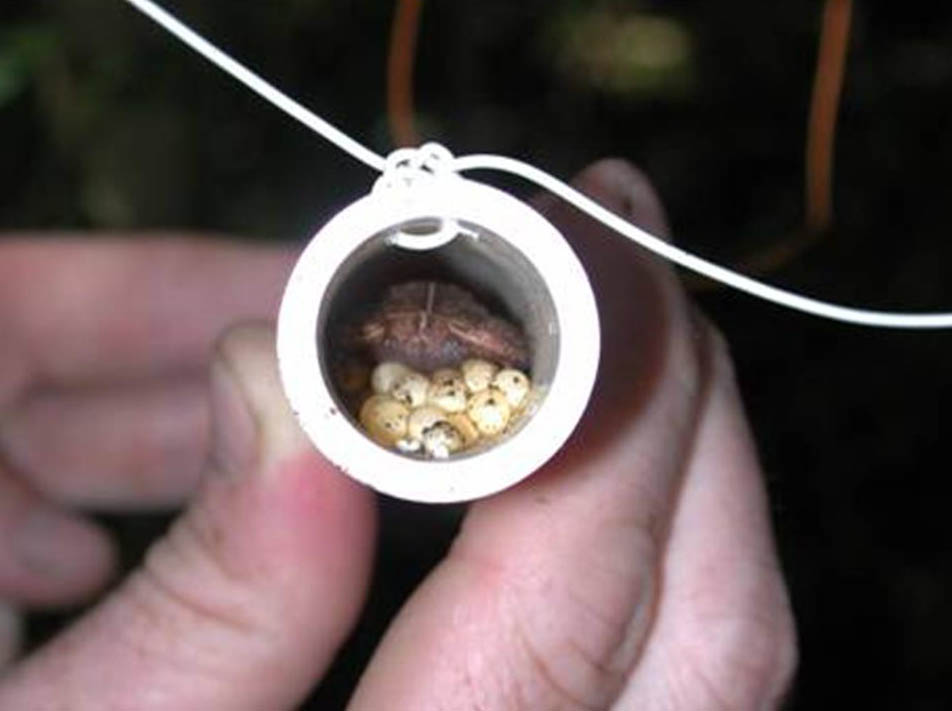
Photo: CTAHR-UH Mānoa
Citric Acid
Citric acid is the only product labeled for controlling coqui in Hawaii. Frogs breathe through their skin so they are highly sensitive to chemical contact. Spray solution on infested plants to kill coqui frog eggs, juveniles, and adults. Treatments can be repeated every 2 weeks.
- Standard Spray Bottle: 1/2 c citric acid + 32 oz water
- 1 gallon hand pump sprayer: 2.25 c citric acid + 1 gallon water
- 5 gallon backpack sprayer: 11.25 c citric acid + 5 gallons water
Spray foliage at night when coqui are actively calling, foraging or mating. Drench ground and slowly work your way up into the canopy. Thoroughly spray to cover the vegetation where frogs perch, including the undersides of leaves. Citric acid can burn sensitive plants, such as ferns and orchids. To avoid damage, rinse treated sensitive plants with fresh water 1 hour after spraying to remove citric acid residue.
*Note: When mixing and applying citric acid make sure to wear proper PPE (long-sleeves, pants, shoes, eye protection, and gloves) when spraying. Do not store the citric acid solution as it will corrode your plastic sprayer. Spray out all mixed solution and rinse with water after use.
This video from the North Kohala Community Resource Center goes over techniques for controlling coqui
Resources
- Kohala Coqui Coalition from Derrick Owens on Vimeo.
- Download our brochure for handy tips on controlling coqui: Coqui Brochure (Final)
If you are on any other island in Hawai‛i and see or hear a coqui frog, please report it immediately to your local ISC, the Hawaii Dept of Agriculture, or 643-PEST.
